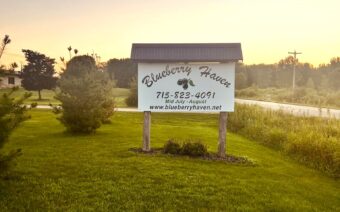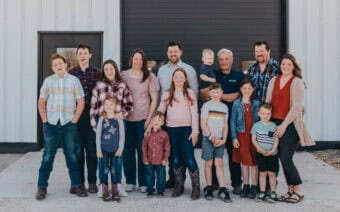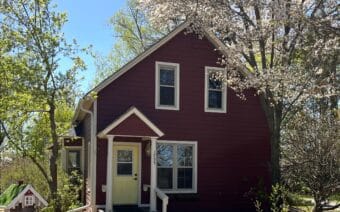
August 26, 2024
OMRO – To the average person, Josh LaMarche – of LaMarche Farrier Services – said most horses look alike.
The reality is, however, LaMarche said, not only are no two horses alike, no four feet on any one horse are alike, either.
No one would know that better than Horse Farrier LaMarche.
Farriers, he said, provide professional hoof care – anything involving shoeing or trimming – to horses of all breeds and disciplines to enhance the animal’s balance, performance and overall well-being.
“If it’s hoof-related, we take care of it,” he said. “We can also fix lameness issues and other problems with the horse. Depending on what it is, we may have to manipulate the foot and/or the shoe in order to create a sound horse – a horse that moves better and that’s more comfortable and, in turn, may perform better.”
The farrier who almost wasn’t
LaMarche said though he has been around horses all his life and started riding them at the age of five, he never planned on becoming a farrier.
By age 10, he said his career plan was to become an equestrian veterinarian.
After getting his bachelor’s degree in animal science with a pre-vet emphasis, he applied to vet school but, like so many applicants, LaMarche said he didn’t get accepted on his first try.
“They said I didn’t have enough experience,” he said. “On paper, I didn’t, but I’ve been around horses since I was five years old. I was in 4-H as a kid. I was on national horse pull teams and competed at the national level multiple times with that. I also competed multiple times at nationals in horse judging for conformation and the looks of the horse.”
Instead, LaMarche said he started working with Dr. Adam Leininger at Great Lakes Equine – doing a multitude of things.
Whenever a foot-related problem came up, he said he jumped at the chance to go with Leininger on calls to learn as much as he could from him.
“He specializes in equine foot (care) and very much likes doing the podiatry side of things,” he said.
LaMarche said it was Leininger who encouraged him to shift careers.

“He asked me why I would want to spend $150,000 more on vet school when I had a background in horses and some horseshoeing experience from my dad who had done it a little bit,” he said. “He said, ‘you’ve got this background, so why don’t you go to horseshoeing school instead? It’s six months worth of schooling instead of four-plus years of schooling.’ I thought about it for a few months on and off and decided this might be the better path.”
LaMarche said he left the clinic hoping that when he finished horseshoeing school he could go back there and work for them while building a clientele – and that’s exactly what happened.
“I was pretty bummed out when I didn’t get into vet school on my first try, but it turned out to be a silver lining for me,” he said.
Education is key
In the U.S., LaMarche said farriery is not regulated, no legal certification exists and qualifications can vary.
However, wanting to make sure he knew everything he needed to become a quality farrier, LaMarche said he attended the Minnesota School of Horseshoeing – one of 13 schools in the U.S. operated by the accredited American Farriers Association – graduating in December 2017.
“I learned basic trimming, shoeing, anatomy, how to build shoes, the different types of shoes to use on horses, as well as a medical portion of the program, including different diagnoses of the foot,” he said. “In my opinion, (getting a formal education) is what people should do. They should get the basics down, then do some sort of apprenticeship with a farrier who’s been in the industry for a while.”
Following graduation, LaMarche said he returned to Great Lakes Equine and seeing all the clients there who needed a farrier, was able to offer his services.
“I began getting clientele that way, and I eventually got to the point where my schedule was too full to work both jobs, so I quit the vet clinic and the rest is history. It’s been an awesome ride for me,” he said.
LaMarche said it just so happened that a local farrier was relocating just as he launched LaMarche Farrier Services.
“There’s a lot of people in this area that need a farrier, so I got a lot of his clients,” he said.
On average, LaMarche said he sees 12-14 horses a day, though sometimes it’s closer to 15-20.
To shoe or not to shoe
LaMarche said not all horses need shoes – noting that it depends on the work they do or the kind of horse they are.
Of the 320-340 horses he sees, LaMarche said only about 80-100 are in shoes.
“One reason a horse would need shoes is because they can enhance movement,” he said. “If a horse needs a longer stride or a heightened stride to have a little more knee action – different types of shoes can help with that.”
LaMarche said he likes to shoe a lot of performance horses – from rodeo horses to race horses to jumping horses – “because it gives them better traction and a better ability to move in dirt or whatever conditions they’re working or running on.”
“But the biggest reason a horse would need a shoe or shoes is lameness,” he said. “They might have thin soles, soft feet or underlying conditions that are part of the horse’s internal structure that we can relieve pressure by wedging up a certain area of the foot,” he said.
Many performance horses, LaMarche said, are barefoot, but the higher-end ones, especially race horses, are all shoed.
“My opinion is the best foot is the one you don’t put (shoes on), if possible,” he said. “It makes for a stronger foot, and if they can perform and do everything they need to do without a shoe on, it’s just way better for the horse. If you can keep a horse in its natural state the best you can for as long as you can, it’s going to show in the horse’s longevity.”
LaMarche said all four of a horse’s feet don’t necessarily get shoed either.
Oftentimes, he said, it’s just the front feet that do.
“Horses bear about 65-70% of their weight on their front feet so that’s where a lot of the problems occur,” he said. “If we can relieve pressure up front, a lot of times their hind end just sort of comes along.”
Horseshoes can sometimes last a whole year, though LaMarche said that depends on what the horse is walking or standing on.
“Horses that are on concrete a lot, go through shoes faster than others,” he said. “But we still have to trim the foot every other month, or about six to eight weeks. That involves pulling the shoes off, trimming the foot, then resetting the same shoes back on.”
When you’re trimming a foot, LaMarche said it could just be a basic trim, making sure they’re balanced, even and that they can move how they should.
LaMarche said some horses need more than just basic shoes – such as specialty shoes with injectable padding.
“That’s the fun of it, especially with new horses and new clients,” he said. “You have no idea what you’re getting into until you get there. But after a while, you get familiar with the horses and their feet. I’ve got horses I’ve been working on for six, seven years, and their feet are pretty much ingrained in my head. I could go to the shop and practically build a shoe for them just from memory.”
Physically demanding job
Being a farrier, LaMarche said, is very physically demanding.
“We live bent over at the waist,” he said. “We are holding these feet up between our legs, and we are literally bent over that horse’s foot the whole time we’re working on it. The back can be a big problem for a lot of farriers.”
LaMarche said it’s not a matter of if you need surgery, but when.

“Your shoulders, arms, hands – all of those are holding or helping to hold these tools along with a 1,000-pound animal,” he said. “You’re trying to hold all this up and get accomplished what you need to as efficiently and quickly as possible. It can be very taxing on your joints. Plus, you’re out in the heat, extreme cold, all day long, working on sometimes not-so-patient horses, with a lot of risk of injury, as well as cuts, scrapes and bruises. And something can happen in the blink of an eye.”
Partly due to that, LaMarche said there is a shortage of farriers.
“I don’t think most people want to work this hard, and the ones who are out there, especially the good ones, are not taking any more work at this time,” he said. “Our schedules are too full. I probably get two to three calls a week, but I’ve been turning down new work for the past year and a half. I don’t have enough room in my schedule, and my body can only take so much.” LaMarche said of the 20 or so farriers in Northeast Wisconsin, his schedule is perhaps the most full – but everyone may not all be doing it full-time.
They’re not all men, either.
LaMarche said he believes there are about five or six farriers in the region who are women.
“They’re all very good – they do a great job,” he said. “But we are hurting for farriers – men or women. I’ve had a couple of people ride along with me, thinking they might be interested in this work, but none of them have panned out. I think they like the idea, but then they see what it actually entails, and I think it’s just too hard of work for a lot of people.”
Despite the physicality of the work, LaMarche said he likes working with his hands and finds being around horses very calming.
Besides that and the camaraderie and friendship with his clients, LaMarche said the thing he likes most about being a farrier is being able to take a problem a horse might be having and try to determine what is causing the problem, and the best way to fix it.
“Anytime I can test my knowledge and skills, even trying a different way of shoeing, or trying a different product, and then seeing the horse go sound afterward is the most rewarding part of the manual side of the job for me,” he said. “Some owners have actually cried because they thought the last time they rode their horse might have been their last, but then we can get it fixed, giving them many more years with their horse. That makes it all worth it.”
Keeping it simple
LaMarche said horseshoeing is very much a traditional profession where not much has changed over the last hundreds of years.
“It’s your hands and a couple of tools,” he said. “It’s pretty nostalgic in that we build horseshoes the same exact way now as they did in the 1700s.”
There are all different kinds of shoes out there and lots of gimmicky products, none of which, LaMarche said, are for him.
Early on in his career, he said he went to a clinic put on by well-known farrier Jim Quick and one of his quotes stuck with him from day one.
“He said ‘the best horseshoeing is simple horseshoeing done very well,’” he said. “That’s how I’ve modeled my business. I do the simple things, things I know to work on most all horses.”
For more, visit LaMarche Farrier Services’ Facebook page.
 Hard work, determination lead self-taught baker to success, storefront
Hard work, determination lead self-taught baker to success, storefront Helping young entrepreneurs discover, build upon the possibilities
Helping young entrepreneurs discover, build upon the possibilities






